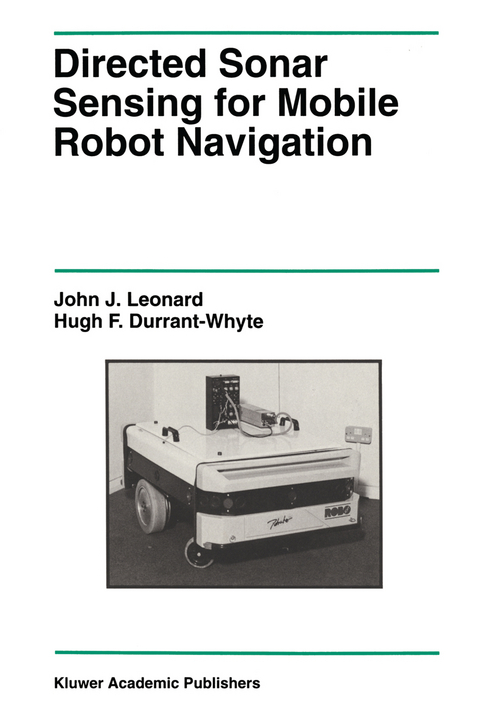
Directed Sonar Sensing for Mobile Robot Navigation
Springer-Verlag New York Inc.
978-1-4613-6625-6 (ISBN)
Preface.- 1 Introduction.- 1.1 The Navigation Problem.- 1.2 Why Use Sonar?.- 1.3 Choosing a Representation.- 1.4 The Kalman Filter.- 1.5 Data Association.- 1.6 Overview.- 2 A Sonar Sensor Model.- 2.1 Introduction.- 2.2 Previous Work.- 2.3 Terminology.- 2.4 The Physics of Sonar.- 2.5 Predicting Sonar Data.- 2.6 Theory vs Practice.- 2.7 Regions of Constant Depth.- 2.8 Sparse vs Densely Sampled Data.- 2.9 Discussion.- 2.10 Summary.- 3 Model-based Localization.- 3.1 Introduction.- 3.2 Problem Statement.- 3.3 The Basic Localization Cycle.- 3.4 Algorithm Summary.- 3.5 Off-line Processing of Densely Sampled Data.- 3.6 Sparse Data Error Model.- 3.7 Tracking Planar Targets.- 3.8 Tracking Planes, Corners, and Cylinders.- 3.9 Hands-off Localization Results.- 3.10 Discussion.- 3.11 Alternative Approaches.- 3.12 Summary.- 4 Map Building.- 4.1 Introduction.- 4.2 Specular Event Interpretation.- 4.3 Rules for RCD-based Sonar Interpretation.- 4.4 Map Building via Track Initiation.- 4.5 Experimental Results.- 4.6 Multiple Hypothesis Track Initiation.- 4.7 Alternative Approaches.- 4.8 Why Build Accurate Maps?.- 5 Simultaneous Map Building and Localization.- 5.1 A Unified Approach to Navigation.- 5.2 Research Issues.- 5.3 Restatement of the problem.- 5.4 A Strategy for Decoupling A(k I k).- 5.5 Initialization With Sonar.- 5.6 Dynamic Map Building and Maintenance.- 5.7 Summary.- 6 Directed Sensing Strategies.- 6.1 The Time Problem.- 6.2 Tracking Sonars.- 6.3 Orienteering.- 6.4 Related Research: Sensor Control.- 6.5 Summary.- 7 Why Use Sonar?.- 7.1 Sonar vs the Infrared Rangefinder.- 7.2 Sonar vs Vision.- 7.3 Sensor Fusion.- 7.4 Future Research.- 7.5 Contributions.- A Hardware and Software.- A.1 Mobile Robots.- A.2 The Polaroid Ultrasonic Ranging System.- A.3 Software.
| Erscheint lt. Verlag | 8.10.2012 |
|---|---|
| Reihe/Serie | The Springer International Series in Engineering and Computer Science ; 175 |
| Zusatzinfo | XXI, 183 p. |
| Verlagsort | New York, NY |
| Sprache | englisch |
| Maße | 155 x 235 mm |
| Themenwelt | Informatik ► Grafik / Design ► Digitale Bildverarbeitung |
| Informatik ► Theorie / Studium ► Künstliche Intelligenz / Robotik | |
| Technik ► Elektrotechnik / Energietechnik | |
| ISBN-10 | 1-4613-6625-9 / 1461366259 |
| ISBN-13 | 978-1-4613-6625-6 / 9781461366256 |
| Zustand | Neuware |
| Haben Sie eine Frage zum Produkt? |
aus dem Bereich


